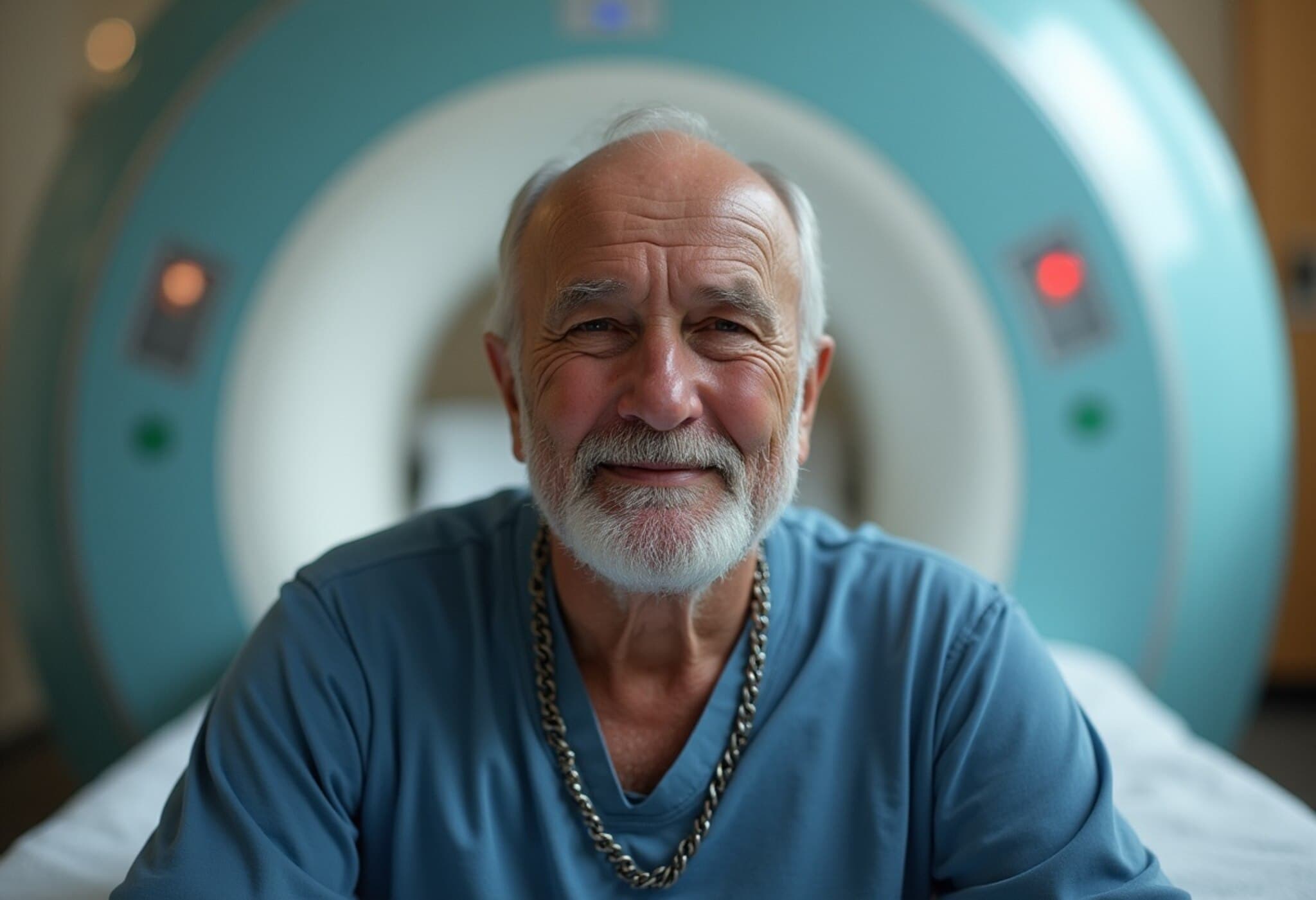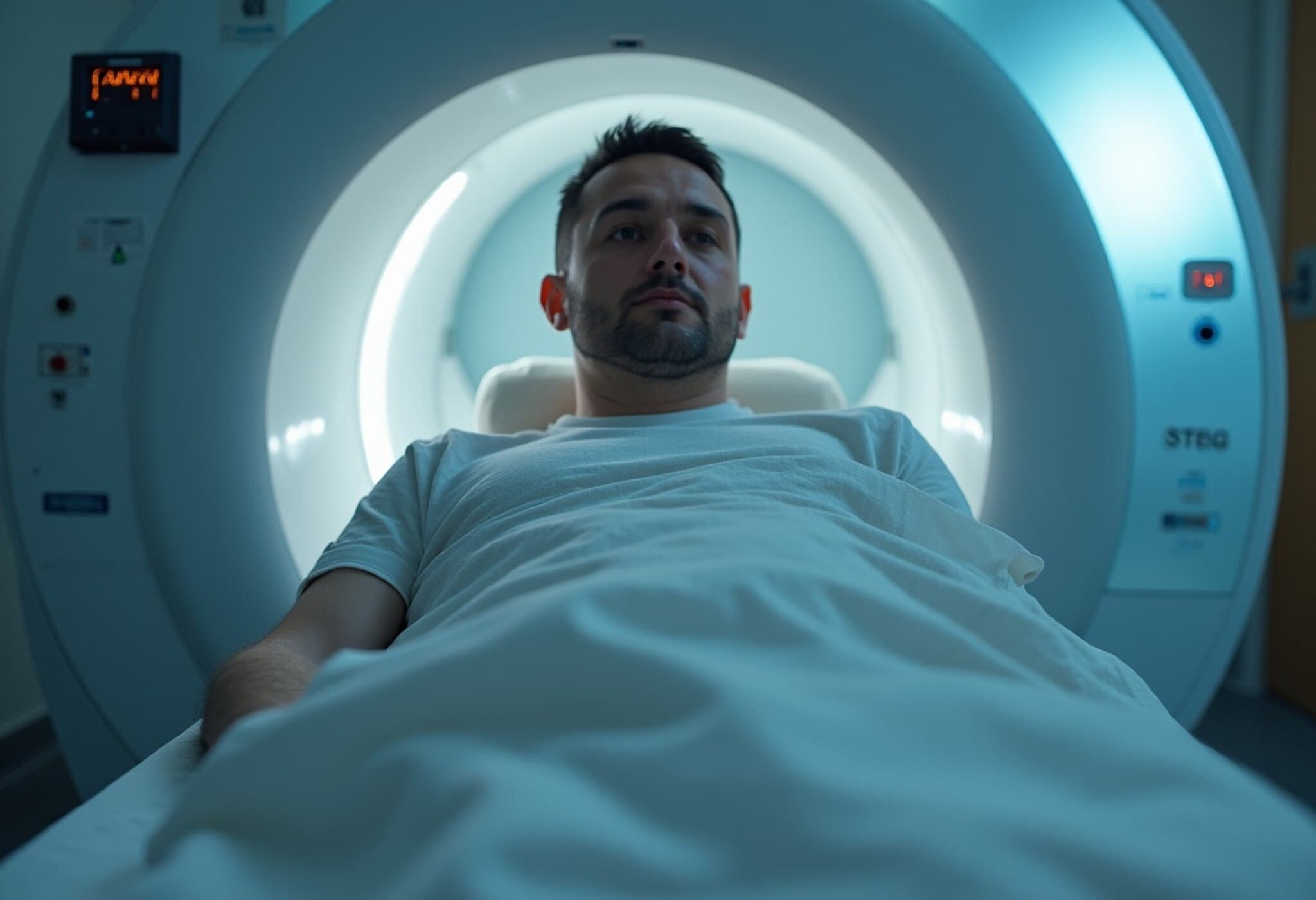Fatal MRI Accident in Westbury, New York: A Harrowing Account
In an unprecedented and devastating incident at the Nassau Open MRI center in Westbury, New York, Keith McAllister, 61, lost his life after being tragically pulled into an MRI machine by a heavy metallic chain he was wearing around his neck. The incident unfolded on a Thursday afternoon, shortly after his wife, Adrienne Jones-McAllister, completed a knee scan.
A Moment of Help Turns Deadly
According to Mrs. Jones-McAllister, her husband entered the scan room to assist her off the table following her MRI procedure. It was a gesture of care that turned fatal when the machine’s powerful magnetic field abruptly attracted the nine-kilogram weight-training chain around his neck, dragging him dangerously close to the device.
"As he got close, the machine switched him around, pulled him in, and he hit the MRI," Jones-McAllister recounted, her voice breaking as she described her frantic pleas for help—"Could you turn off the machine, call 911, do something, turn this damn thing off!"
Despite immediate attempts by the technician and others to free him, Mr. McAllister remained stuck for nearly an hour before being released. He suffered severe trauma, including heart attacks, and despite medical intervention, succumbed to his injuries the following day.
Understanding the Dangers of MRI Machines
Magnetic Resonance Imaging (MRI) machines harness powerful electromagnetic forces—in some cases equivalent to several teslas—which can exert immense attractions on ferromagnetic objects. The National Institute of Biomedical Imaging and Bioengineering warns that these magnetic fields are strong enough to hurl heavy metal objects such as oxygen tanks or wheelchairs across a room.
In Mr. McAllister’s tragic case, the heavy steel chain acted as a deadly anchor, pulling him inexorably into harm’s way. This incident tragically highlights the critical need for strict adherence to safety protocols around MRI machines and robust pre-scan screening for any metallic items.
Previous Incidents Underscore MRI Risks
Sadly, this is not the first fatal accident involving MRI equipment in New York. In 2001, six-year-old Michael Colombini was killed at Westchester Medical Center when an oxygen tank was drawn into the magnetically charged chamber. The family later settled a lawsuit for nearly $3 million, emphasizing the grave risks if safety procedures fail.
These catastrophic events underline the importance of comprehensive staff training, patient education, and rigorous safety checks to prevent metallic objects from coming near MRI machines.
Critical Questions and Wider Implications
Beyond the heartrending personal loss, this incident raises urgent questions about hospital and imaging center protocols:
- Are MRI safety procedures consistently enforced, especially regarding visitor entry?
- What training do technicians receive to handle emergencies involving magnetic attraction?
- How are patients’ family members or helpers screened before entering MRI rooms?
From a policy standpoint, should regulatory bodies mandate stricter oversight and safety audits for MRI facilities nationally?
Experts suggest that this tragedy should serve as a catalyst for reinforced standards and public awareness campaigns around MRI safety.
The Human Cost Behind the Magnetic Field
For Adrienne Jones-McAllister, the incident is a heart-wrenching reminder of the fragility of life and the sometimes invisible dangers lurking in medical technologies designed to heal. Her testimony and the community support, including a GoFundMe campaign to cover funeral expenses, have brought attention to a silent but severe risk within modern diagnostic medicine.
Medical professionals stress that while MRIs are invaluable diagnostic tools, vigilance remains paramount. Families and patients should be proactive in questioning procedures and ensuring that no metallic items are brought into scanning areas.
Editor’s Note
This tragic event is a sobering example of how advanced medical technology can sometimes lead to unintended fatal consequences without rigorous safety measures in place. It prompts us to reflect not only on technical safeguards but also on the human factors—the urgency of compassion, quick-thinking, and preparedness in medical settings. Moving forward, it is vital for policymakers, healthcare providers, and the public to collaborate closely to prevent such heartbreaking accidents. How are imaging centers across the country evaluating their safety protocols? And what steps can patients and families take to safeguard themselves? These critical conversations must continue.



















